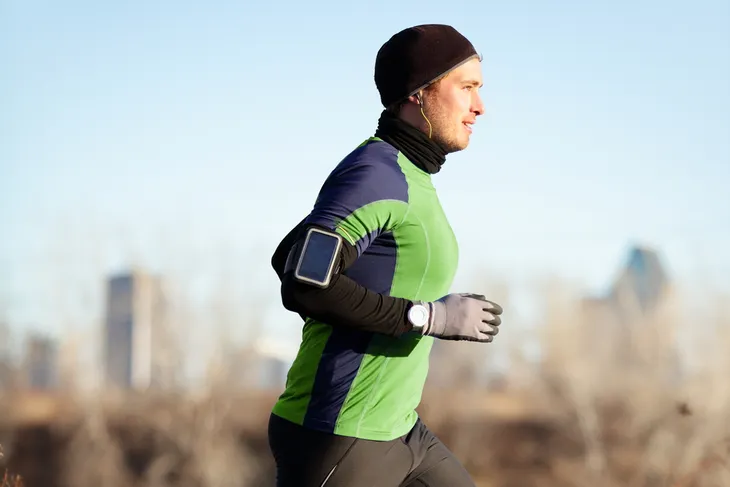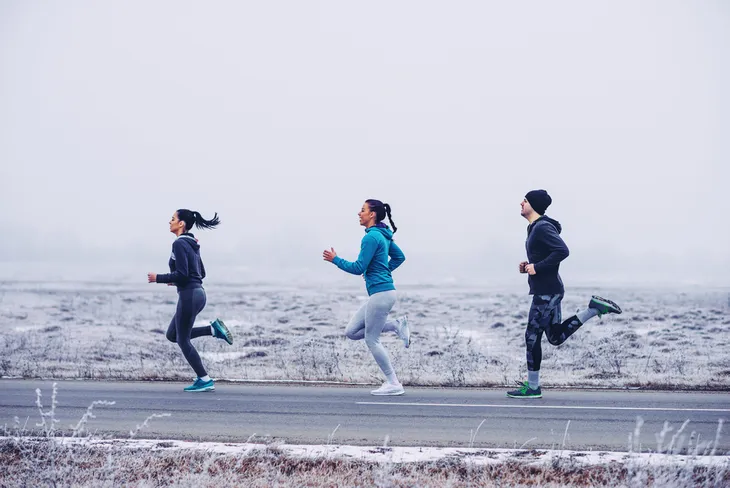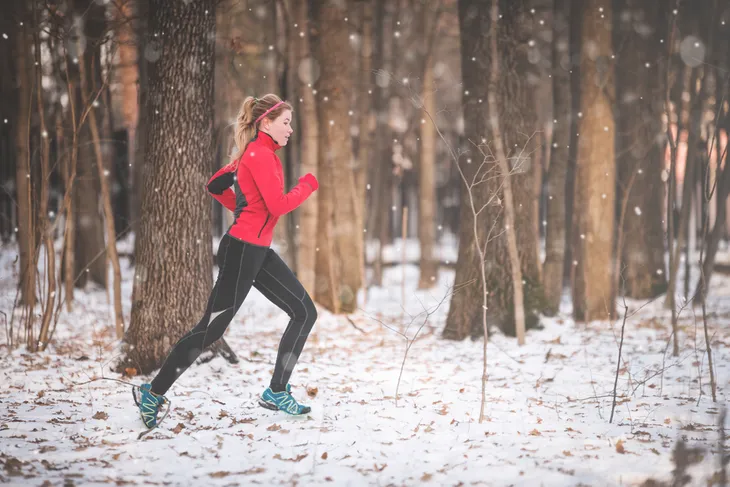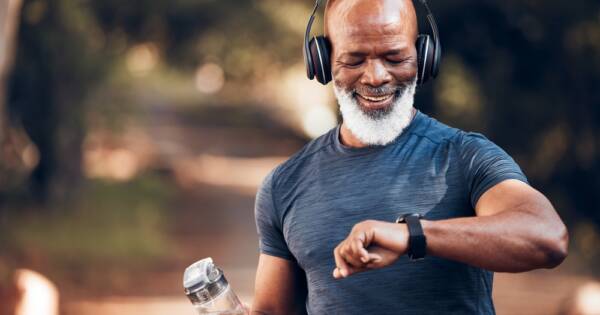As 2024 approaches, many people look to begin the year with resolutions to become more fit. Some people find it challenging to get enthusiastic about outdoor exercise during the winter. However, don’t discount the joys of running in a winter wonderland. It’s accessible, available to all and doesn’t involve gym fees or expensive equipment.
Health benefits
First off, exercising has immense physical health benefits such as increased heart and blood vessel health, increased metabolism, favorable body composition and enhanced immune function. Regular exercise can also help with mental health including reducing depression, anxiety and improving overall mood.
In fact, there is some recent evidence to show that outdoor exercise may provide additional improvements in well-being. These improvements could also contribute to combating seasonal affective disorders during the winter months and help to combat a slew of seasonal illnesses. So, what can we do to jump in and reap these health benefits in winter?
Motivation 101
Before you start running, think about what motivates you. New year’s resolutions are a great start, but there needs to be a consistent motivator — something that won’t go away by February — to get you out and running when the weather forecast begins with a minus sign.
If you’re looking for motivation, start with these tips for pumping yourself up. Once you’ve found your motivation, lacing up and taking the first (and next) steps, consistently, won’t be as tough. Here’s a few helpful hints to make that winter run a bit easier and much more enjoyable.
Getting started
The biggest injury concerns to cold weather running are slippery conditions and frostbite. With that in mind, make sure you’re set with the right equipment. When out in the winter, think COLD. This is not only an assessment of the weather. It’s an acronym that stands for:
- CLEAN: Keeping your gear (clothing and shoes) clean, allows them to work properly. Mud and slush on your hands and feet can make you lose heat quickly.
- Avoid OVERHEATING: If it’s your first time exercising in the cold, you might think you have to put on a snowsuit. However, with poorly chosen outfits, you run the risk of overheating.
- LAYERED clothing: Wearing a fitted and moisture-wicking base layer, a light but insulating middle layer, and a breathable, but wind- and water-repellent jacket will give you the best of all worlds. Cover the parts of your body most likely to be exposed such as your hands, neck, and face with running gloves, a neck gaiter or scarf, and toque to keep these sites warm. Consider running with a waist bag or backpack, to carry these items along with your phone for safety.
- Keep your clothing DRY: Breathable, but wind and water repellant clothing will keep your clothes from becoming too damp with either sweat or the environmental conditions, which could suck your heat away.
Finally, understand that clothing is a matter of personal preference. As a coach of local, national and international (Olympic) track and field athletes, Kurt Downes, co-author of this story, has coached athletes who run in shorts with mittens and others who can barely move with so many layers on. Experiment with what works for you, and makes you comfortable.
 Shutterstock/baranq
Shutterstock/baranqTips for success and safety
Make sure you have a clearly defined goal. Do you want to increase fitness, burn calories, enjoy some fresh air or just move your body? Whatever your goal, make it something that is short-term, sweet and attainable. Leave room to adjust and scale up as you crush those running goals.
Schedule and plan: Find a slot of time that works best for you and block it out. In winter, it is especially important to plan your runs. My sound advice is to start slow and follow a gradual progression.
Don’t skip ahead despite how well you may be doing. Think about your current level of fitness: you might set out with the intention of running 10 kilometres, but if you’re five kilometres from home and get tired or twist an ankle, the long walk (or hobble) home increases the risks of cold injuries like hypothermia and frostbite, and may also mean you’re returning in the dark.
Connect: Get to nature. Find a local well-lit and travelled trail, a riverfront, a park or take to your neighbourhood streets. Grab a partner, connect with people in your workplace, download a running app or join a running club. Meet at a local spot or pick a hang out spot after your running session. Make it a weekly social event.
Weather check: Lastly for those of us who have smartphones connected to our hip, have a solid weather app on your home screen. Checking the weather frequently can serve to preemptively avoid injury pitfalls from extreme cold or slippery surfaces.
Injury prevention
Be mindful of the times that you head out for runs; if possible, find a time during sunlight hours. It will add a bit of warmth, positively affect mood and increase vitamin D production for bone health and immune function. Run in well-lit areas and wear bright colours so you’re visible to others, especially if running on the road.
Fix your eyes forward: Focus on what’s coming ahead. It’s easy to get into the zone and lose yourself in thoughts or your favourite tune, but judging the terrain ahead is important to prevent a misplaced step, a twisted ankle or a slip.
Stride wise: First, focus on settling into a rhythm at a fixed tempo. This will allow you to create a stride pattern that’s neither too short nor too long to keep on moving. Shortening your stride length will provide more stability when ice and snow are present (this is not the time to work on an Olympic-level stride pattern). If you can’t avoid a snowy or icy patch, it’s probably best to stop and walk around it.
Breathing: Check your breath. The effects of cold exposure can often impede normal physiological function. Specifically, inhaling cold dry air during physical activity can have adverse health effects on breathing. Especially true for those with compromised respiratory systems or those predisposed to asthma.
Hydration: Even though it may not seem like an immediate need, it’s important to be well hydrated before and throughout your workouts. Cold and snow don’t mean the air is wet (much of the arctic is actually classified as a desert because of the lack of precipitation). Also, your body generates a lot of heat, even more when you’re exercising, causing heat loss from sweat.
If you’re just getting started with winter running, know that there are plenty of others out there too. In cities across North America, runners kick-start their year by hitting the streets to cover five-kilometre and 10-kilometre distances on New Year’s Day, which could be a great inspiration to jump-start your winter exercising. Remember, as you get started, make a plan to do it safely.
Kurt Michael Downes, PhD Student, Kinesiology, University of Windsor and Kevin Milne, Associate professor, Kinesiology, University of Windsor
![]()
This article is republished from The Conversation under a Creative Commons license. Read the original article.







